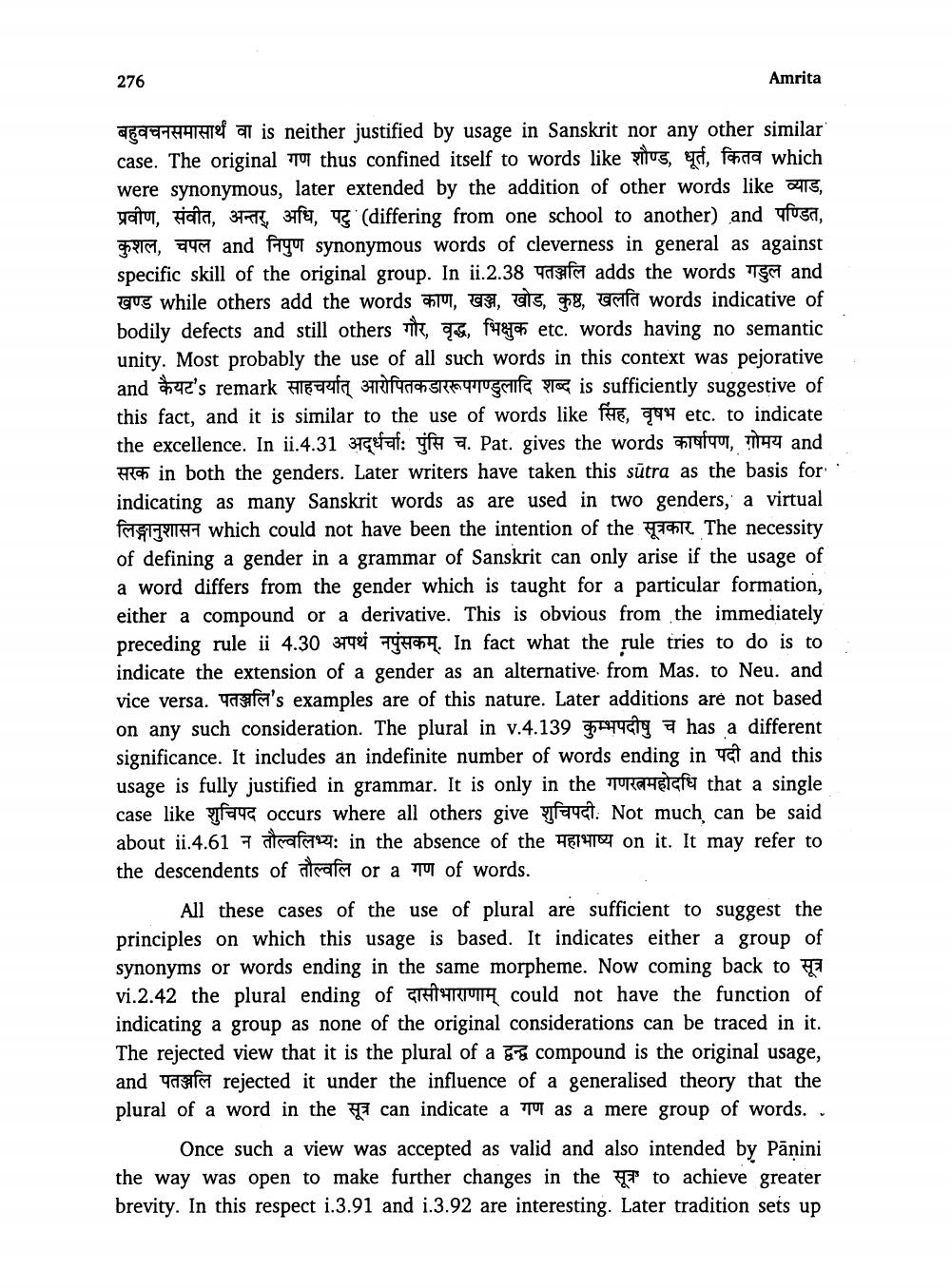________________
276
Amrita
26994441hef all is neither justified by usage in Sanskrit nor any other similar case. The original गण thus confined itself to words like शौण्ड, धूर्त, कितव which were synonymous, later extended by the addition of other words like 2015, yaitu, Haita, 371, 379, ug (differing from one school to another) and ufusa, कुशल, चपल and निपुण synonymous words of cleverness in general as against specific skill of the original group. In ii.2.38 Tafsi adds the words "TgM and Gus while others add the words TM, as, cis, 8, ara words indicative of bodily defects and still others गौर, वृद्ध, भिक्षुक etc. words having no semantic unity. Most probably the use of all such words in this context was pejorative and कैयट's remark साहचर्यात् आरोपितकडाररूपगण्डुलादि शब्द is sufficiently suggestive of this fact, and it is similar to the use of words like the, 294 etc. to indicate the excellence. In ii.4.31 अर्धर्चाः पुंसि च. Pat. gives the words कार्षापण, गोमय and He in both the genders. Later writers have taken this sūtra as the basis for indicating as many Sanskrit words as are used in two genders, a virtual लिङ्गानुशासन which could not have been the intention of the सूत्रकार. The necessity of defining a gender in a grammar of Sanskrit can only arise if the usage of a word differs from the gender which is taught for a particular formation, either a compound or a derivative. This is obvious from the immediately preceding rule ii 4.30 39491 704064. In fact what the rule tries to do is to indicate the extension of a gender as an alternative from Mas. to Neu. and vice versa. Yasfat's examples are of this nature. Later additions are not based on any such consideration. The plural in v.4.139 9794cy 9 has a different significance. It includes an indefinite number of words ending in 47 and this usage is fully justified in grammar. It is only in the TRAHETcfg that a single case like शुचिपद occurs where all others give शुचिपदी. Not much can be said about ii.4.61 न तौल्वलिभ्यः in the absence of the महाभाष्य on it. It may refer to the descendents of atract or a 10 of words.
All these cases of the use of plural are sufficient to suggest the principles on which this usage is based. It indicates either a group of synonyms or words ending in the same morpheme. Now coming back to E vi.2.42 the plural ending of RM114 could not have the function of indicating a group as none of the original considerations can be traced in it. The rejected view that it is the plural of a compound is the original usage, and af rejected it under the influence of a generalised theory that the plural of a word in the can indicate a tot as a mere group of words.
Once such a view was accepted as valid and also intended by Panini the way was open to make further changes in the P to achieve greater brevity. In this respect i.3.91 and 1.3.92 are interesting. Later tradition sets up




